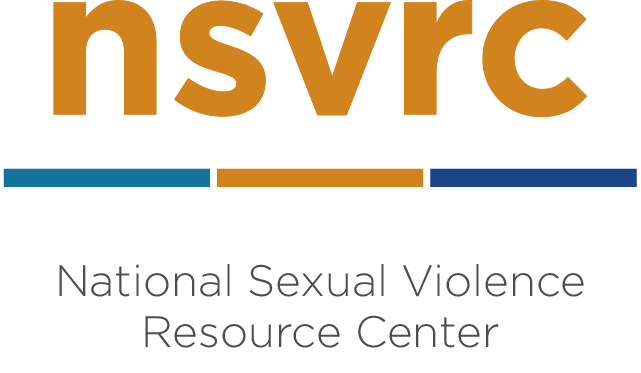A person sexually abuses a child (up to age 12) when he or she exposes the child to sexual acts or behavior. That child may experience many different short and long term reactions to that abuse (NSVRC, 2011).
Signs of child sexual abuse can be (NSVRC, 2015):
Child sexual abuse is a common experience. It happens within all communities, societies, and cultures. Children rely on parents and caretakers to meet their basic needs. Caretakers are also the people most likely to abuse a child. Adults are responsible for teaching and protecting children.
In a safe relationship, a child would be
Some social norms make it easier to abuse children. These norms include:
To learn more about what child sexual abuse is, see this overview.
Who is affected?
Who is reporting to law enforcement? (Snyder, 2000)
Who is committing child sexual assault? (Snyder, 2000)
One Caring Adult NSVRC (2018)
This free online learning tool for teachers and other school professionals highlights ways to create a trauma-informed classroom. In this three part course you will hear from experts in seven videos. The accompanying workbook guides you through the course and provides opportunities to think about how to create a trauma-informed space for the children you work with. Advocates can share this course with the educators they work with to help build trauma-informed classrooms.
Resilience In Children Podcasts NSVRC (2018)
In this two-part video podcast, Casey Keene from the National Resource Center on Domestic Violence explains resilience and how children who have experienced adverse childhood experiences can thrive. Part two discusses how to foster resilience in children.
This guide is written for sexual assault program advocates working with families who are considering reunification with someone who has sexually offended. It provides an overview of the reunification process and how to navigate the process of clarification, reconnection, and reunification. For more information also see the the webinar with downloadable powerpoint slides presented by Joan Tabachnick and Peter Pollard.
We also recorded a video podcast with Joan Tabachnick and Peter Pollard in which they discuss important terms used during the family reunification process.
The Advocates Guide:Working With Parents Of Children Who Have Been Sexually Assaulted NSVRC (2015)
This guide is designed for sexual assault program advocates working with non-offending parents and/or caregivers of children who have experienced sexual assault. The suggestions and strategies are intended for use with children under the age of 13. It is available in English and Spanish.
Growing Resiliency: Meeting the Needs of Children Surviving Incest NSVRC (2013)
This webinar discusses the challenging dynamics of supporting a child’s resiliency after experiencing sexual violence by a family member. It reviews ways that advocates and allied professionals can nurture resiliency. (1 hour)
Putting the Pieces Together: Prosecuting Perpetrators of Incest while Supporting Child Victims and Families NSVRC (2013)
This webinar recording addresses the misperceptions about the dynamics of incest to help promote better response by victim service providers and other members of the system. (1 hour)
Defending childhood: Protect, heal, thrive Attorney General’s National Task Force on Children Exposed to Violence (2012)
This report presents the findings of the Attorney General’s National Task Force on Children Exposed to Violence. It addresses children’s exposure to many different forms of violence, including sexual abuse, in a variety of settings and the resulting psychological trauma.
Bringing Hope: Responding to Disclosures of Child Sexual Abuse NSVRC (2014).
In this course, victim service professionals will learn how to describe types of sexually abusive behavior, review practical skills for listening to a disclosure of child sexual abuse, and identify the three guiding principles for responding to a disclosure.
From Approach to Practice: Improving outcomes for children after sexual abuse NSVRC (2014).
In this course victim service professionals will review trauma-informed practices for working with children surviving sexual abuse, learn role-specific recommendations for working with these children, and identify new ideas for collaborating with other professionals.
Child Advocacy Centers and Sexual Assault Centers Collaborations (2013)
This is part of the NSVRC Just Rural Podcast Series and includes interviews with individuals throughout the U.S. who are working in their communities on promising practices in collaboration between Sexual Assault Centers and Children’s Advocacy Centers.
The four podcasts in this series include:
Children Need Us All: Defining the Unique Roles of Victim Service Professionals in Responding to Child Sexual Abuse NSVRC (2013)
This recorded webinar explores the unique roles of victim service professionals in responding to child sexual abuse. Participants will be able to share communication strategies to enhance multidisciplinary team members’ ability to meet the needs of children who experience sexual abuse. Download transcript.
Grounding Tools/Herramientas de quietud
As a companion to The Advocates Guide: Working With Parents of Children Who Have Been Sexually Assaulted this interactive tool offers five grounding tools. Grounding tools offer the ability for anyone to calm their mind and body down during a scary time. This tool can be used with an advocate, parent, or even alone.
Como complemento de La guía del asesor: Cómo trabajar con padres de niños que han sufrido agresión sexual esta herramienta interactiva ofrece cinco herramientas de quietud. Las herramientas de quietud enseñan cómo calmar la mente y el cuerpo cuando se siente miedo. A esta guía la puede utilizar un asesor, un padre o una persona por su cuenta.
